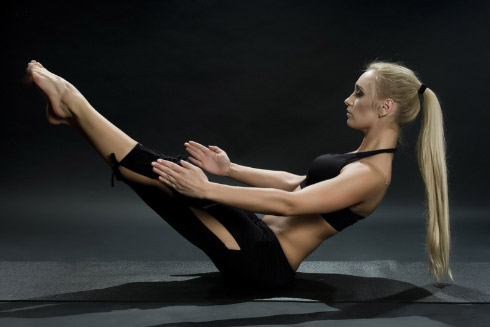Synchronized swimming
 In synchronized swimming, Russian athletes are always at their best. Even at the Olympics in Athens (2004), when in the finals of the group tournament the music of our athletes Ermakova and Davydova were turned off twice, they still took first place.
In synchronized swimming, Russian athletes are always at their best. Even at the Olympics in Athens (2004), when in the finals of the group tournament the music of our athletes Ermakova and Davydova were turned off twice, they still took first place.
Water ballet (the original name of synchronized swimming) is quite a young sport, it appeared only in the 20s of the last century in Canada and very quickly gained popularity in other countries. For a long time (since 1948) synchronized swimming was only an indicative sport, and only in 1984 it was included in the main program – solo performances and a duet. In our time, there are 2 sets of medals being played: for team and double performances.
Russia in this sport occupies a leading position in the world ranking. Since 2000, our athletes at the Olympics do not leave a chance to others, winning all the gold in synchronized swimming for 4 games in a row. This is due to the well-coordinated joint work of coaches (head coach Tatiana Pokrovskaya), stylists, choreographers, makeup artists and of course the athletes themselves: Anastasia Davydova, Anastasia Ermakova, Natalia Ischenko, Svetlana Romashina and others.
The panel of judges consists of 10 people who are divided into 2 teams (5 judges each) to evaluate the performance and artistry, for which they put up to 10 points. The mandatory program must contain specific elements in a specific order.
High requirements are imposed not only on athletes, but also on the venue – the pool. There must be a certain temperature (24-28 ° C), and depth (from 1.5-2-2.5 m), and size (from 12×12 m). But there are also specific requirements for this sport, for example, music should be well audible not only above, but also under water, for which use underwater speakers and sound amplifiers.
Synchronized swimming for children
If your child likes to swim, listen to music and dance, then the way to school for synchronized swimming is open. Basically, synchronized swimming lessons for children start at the age of 6-7 years old, but there are also “frogs” for children from 3 years old. Synchronized swimming in children develops flexibility, flexibility, the ability to navigate under water, develops coordination of movements.
There are also unjustified prejudices in this beautiful sport – for example, that the clamps (which prevent water from entering) prolong the nose, so some athletes, for fear of this, do not wear them.



